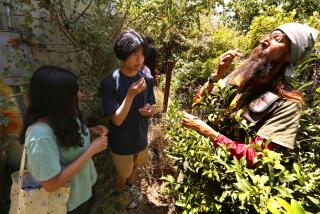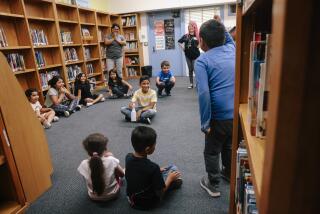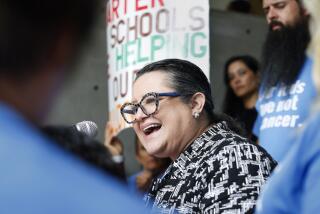After Six Weeks, Summer Vacationâs Over
BOSTON â The lines of yellow buses look out of place. The crossing guards must have gotten their dates mixed up.
Itâs two weeks until school is supposed to open, summerâs still in full bloom and passersby cast puzzled glances at hordes of students in uniforms and backpacks, evidently headed home from class.
In fact, this school, like at least 100 others around the nation, already has begun its fall semester, putting into practice the long-debated notion that the school year should be longer.
âItâs a great thing,â Tiffany Litchfield said as she picked up her two children and the rest of the carpool at the Boston Renaissance Charter School.
âNo, it isnât,â griped her 8-year-old third-grader, Tate. âIâd rather be playing outside.â
Charter schools are typically publicly funded but exempt from public school regulations, which allows them to experiment with teaching methods not used in public schools.
Many of the nationâs more than 420 charter schools now open earlier than their public counterparts. The Renaissance and other programs managed under contract by the Edison Project operate from 200 to 205 days annually, compared with the national average of 180 days.
âLearning is directly proportional to the time spent trying to learn,â said Edison curriculum director John Chubb, a senior fellow at the Brookings Institution. Besides, he said, âkids tend to backslide in the summer. They tend to forget. That means the new school year is spent relearning things that have been forgotten. We reason that if we can reduce summer vacation, you can reduce summer forgetting.â
Thatâs why the 24 schools run by Edison have only a six-week summer respite and no February vacation in places where the midwinter break has been traditional. While theyâre at it, theyâve extended the academic day from about six hours to eight, or from 7:30 a.m. until 3:30 p.m.
Still, said Renaissance School Headmaster Ester Gliwinski, âitâs not the time. Itâs what you do with the time that makes the difference.â
Although itâs too early to judge whether spending more time at the 3-year-old school has made a difference to its students, they have scored well on the state assessment tests in reading, science, math and social studies.
âIf people look at this as just someplace to put the kids for two weeks in the summer, it will be drudgery,â Gliwinski said. âBut if itâs going to be more quality education, then it works. Itâs not to warehouse kids or house them longer. Otherwise we should just call it day care.â
By the second day back Tuesday, fourth graders were sharing reading assignments and first graders were painstakingly recording in a journal what theyâd done on their abbreviated summer break. The school, which offers kindergarten through eighth grade, has 1,085 students. There are 2,000 families on a waiting list.
In spite of the spectacular summer weather, no one seemed too miserable to be inside more than two weeks before their public school counterparts.
âWe learn better than them,â reasoned 6-year-old first grader Hanna Stuart-Shor.
âItâs hard to send the kids to school when it still feels like summer, but my daughter seems to be learning,â said Rosemary Powers, whose 10-year-old daughter is in the fifth grade. âThe kids donât seem to suffer.â
More to Read
Sign up for Essential California
The most important California stories and recommendations in your inbox every morning.
You may occasionally receive promotional content from the Los Angeles Times.










